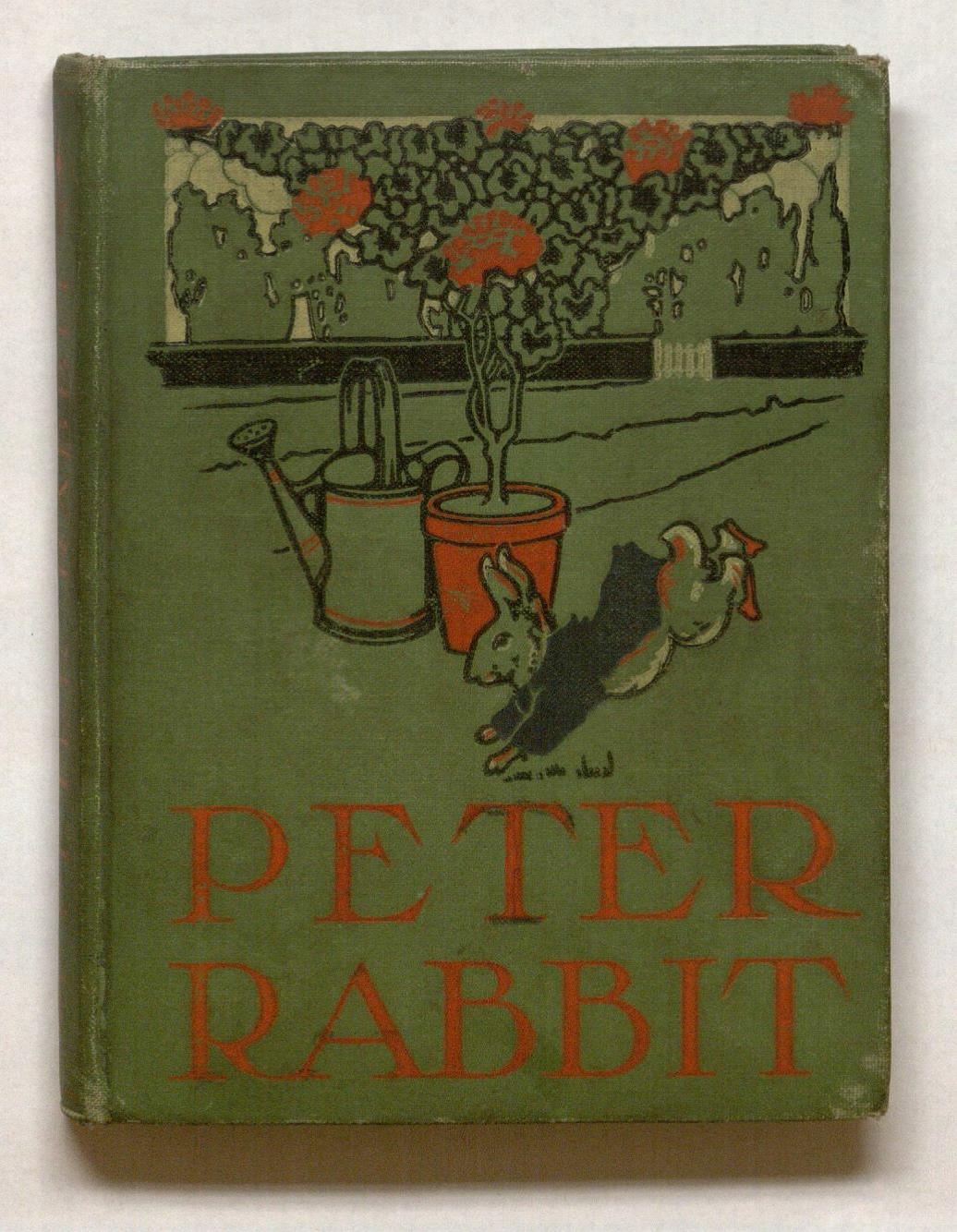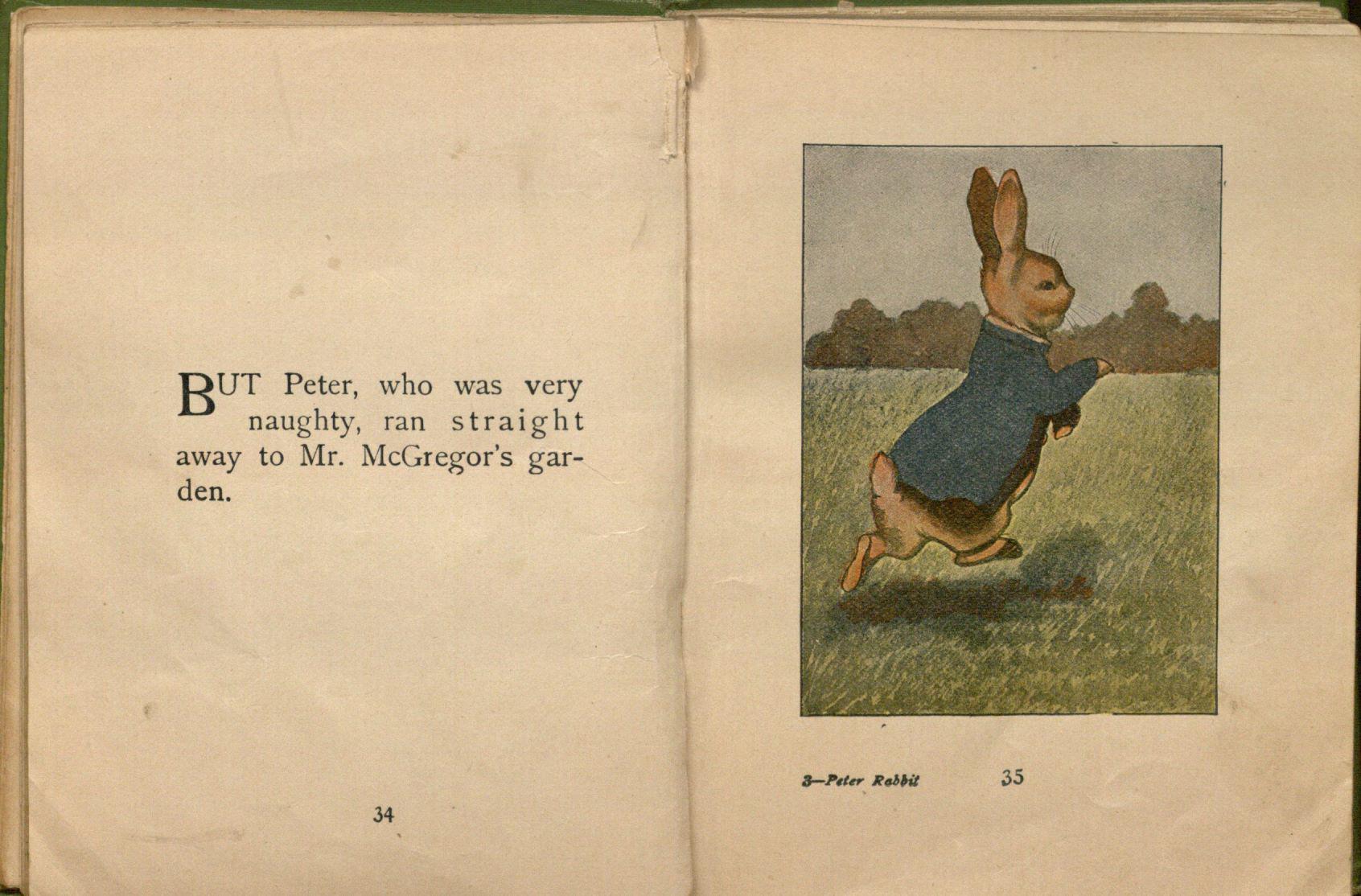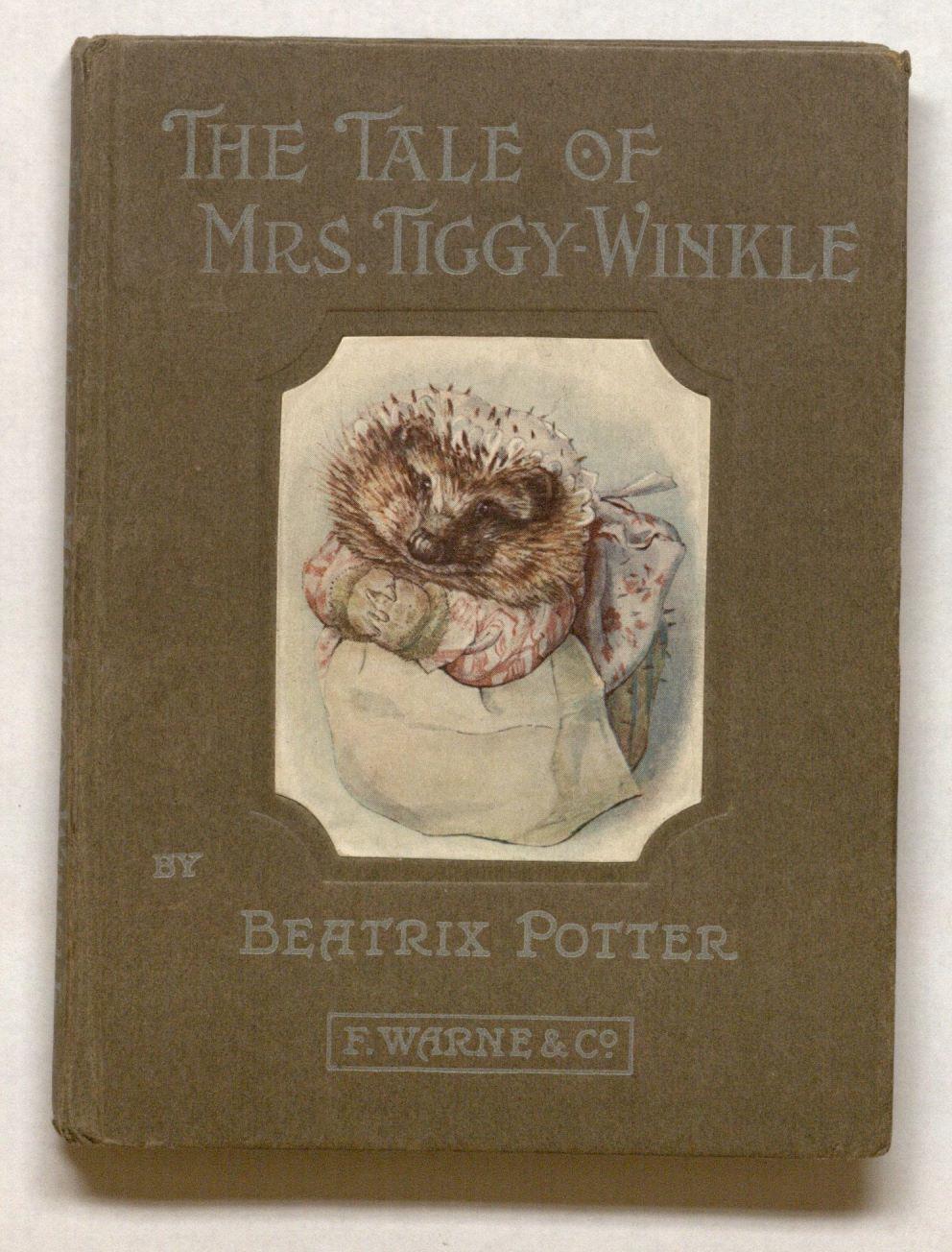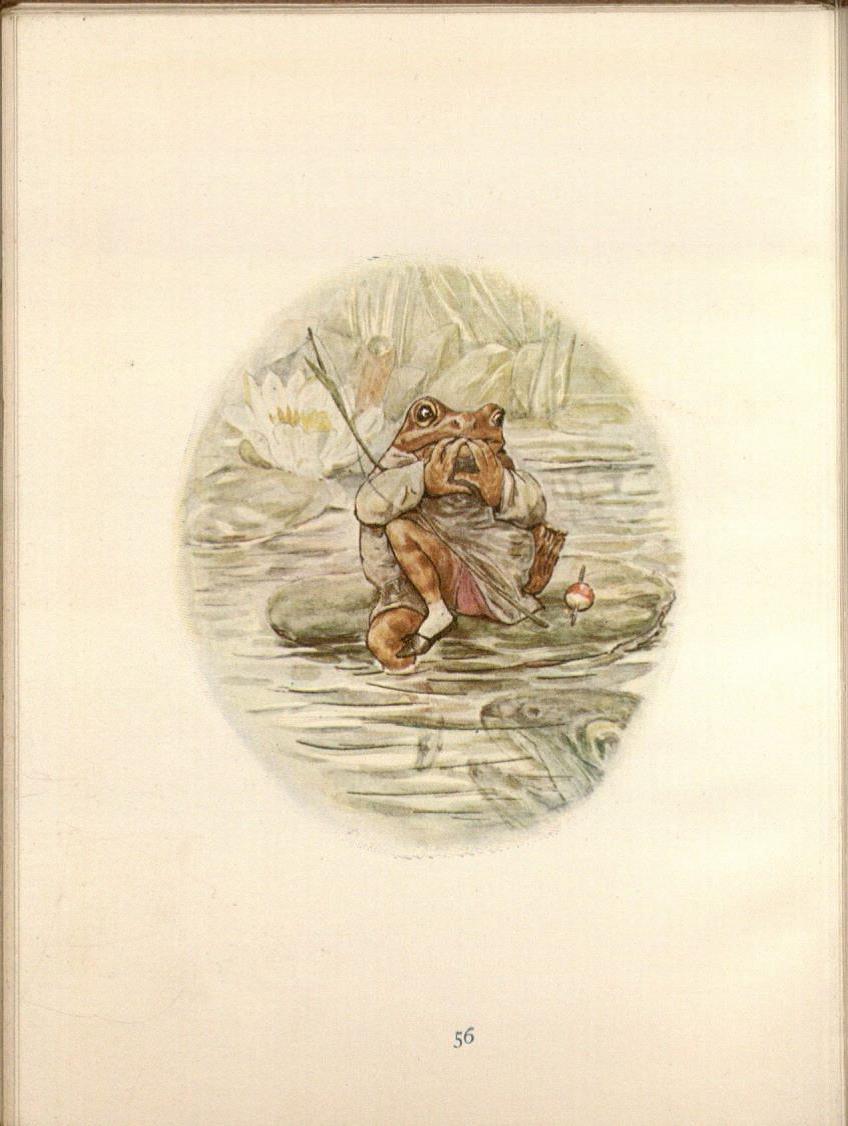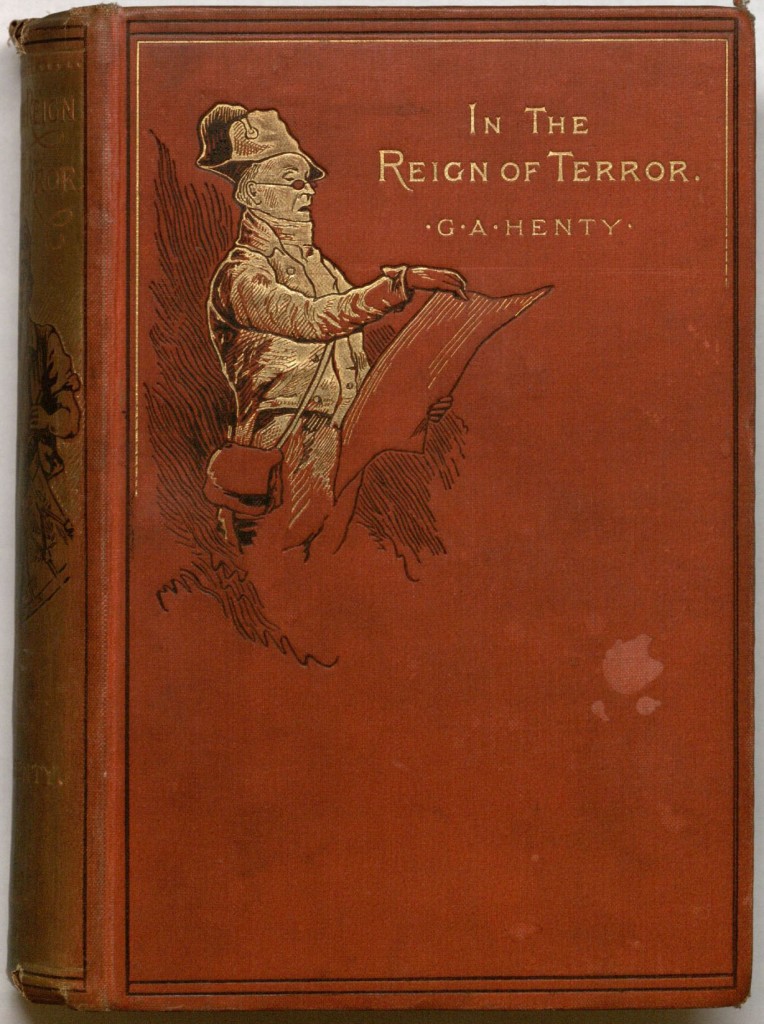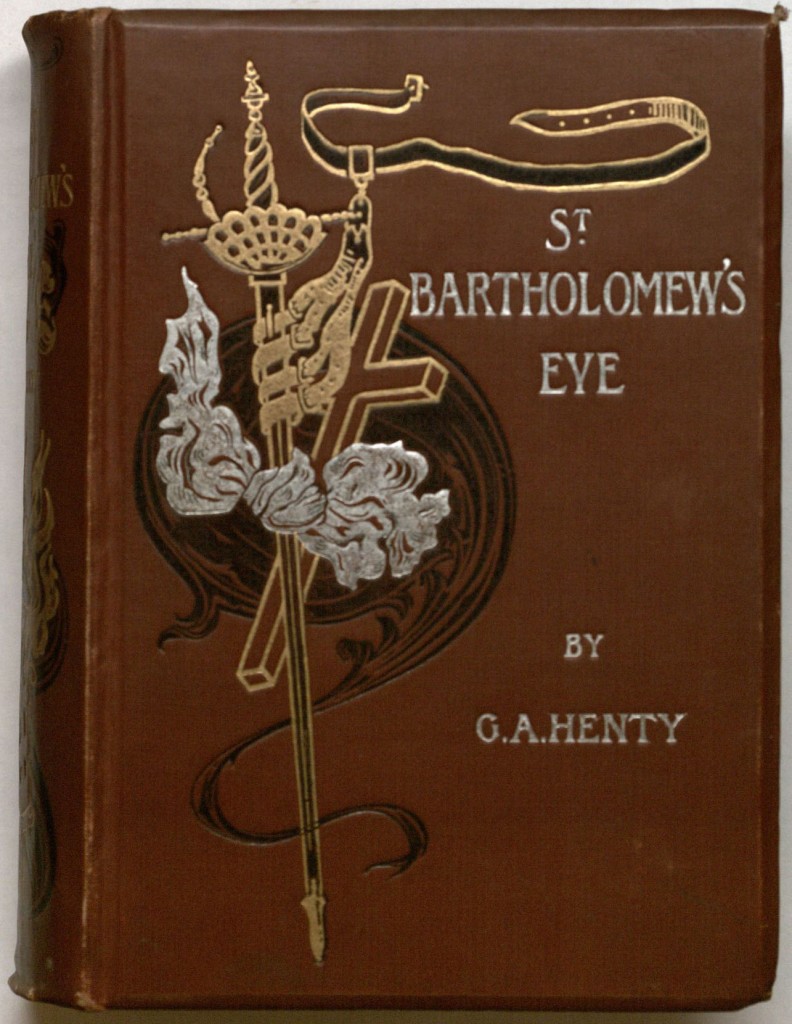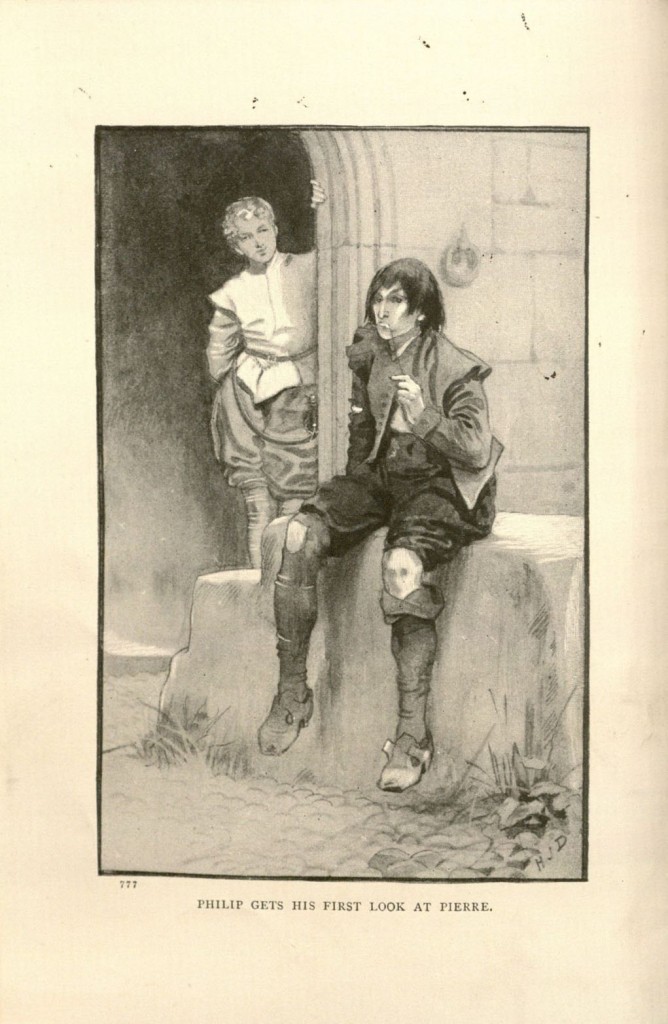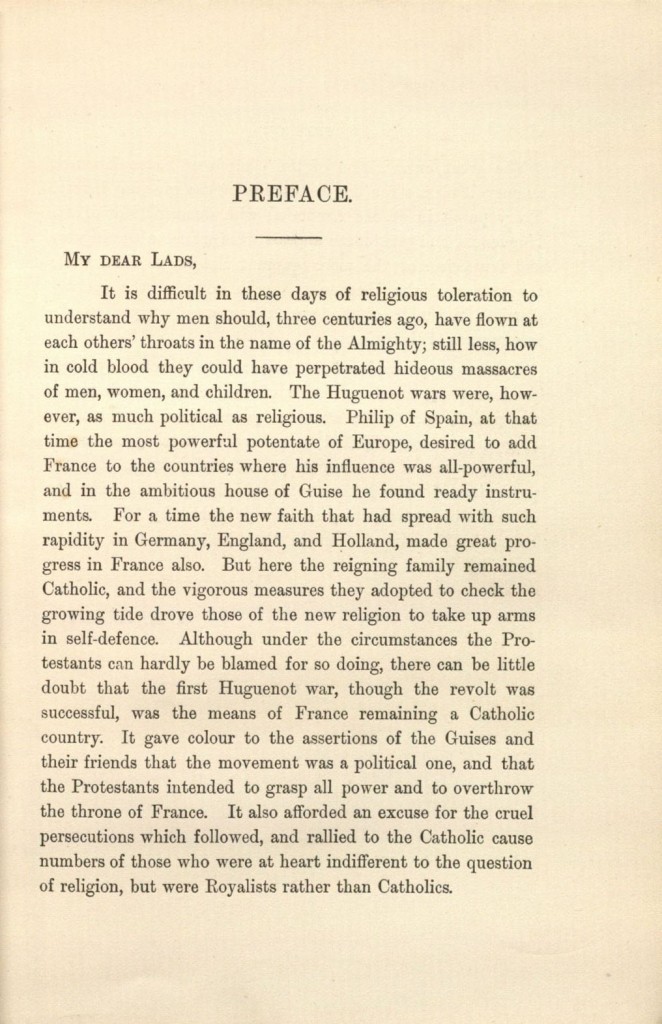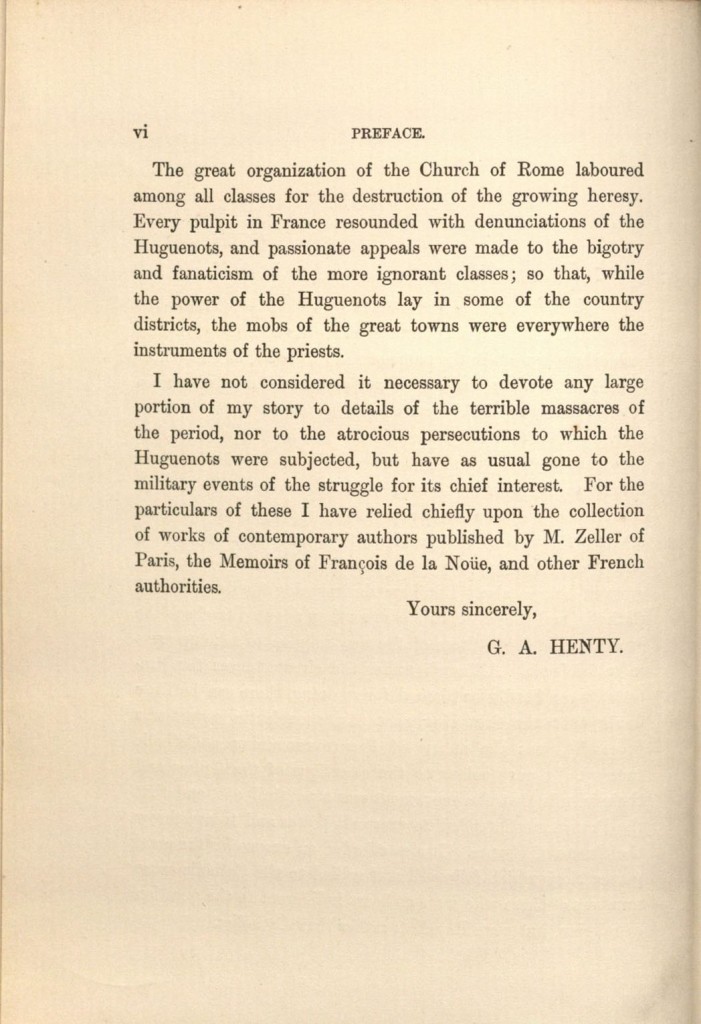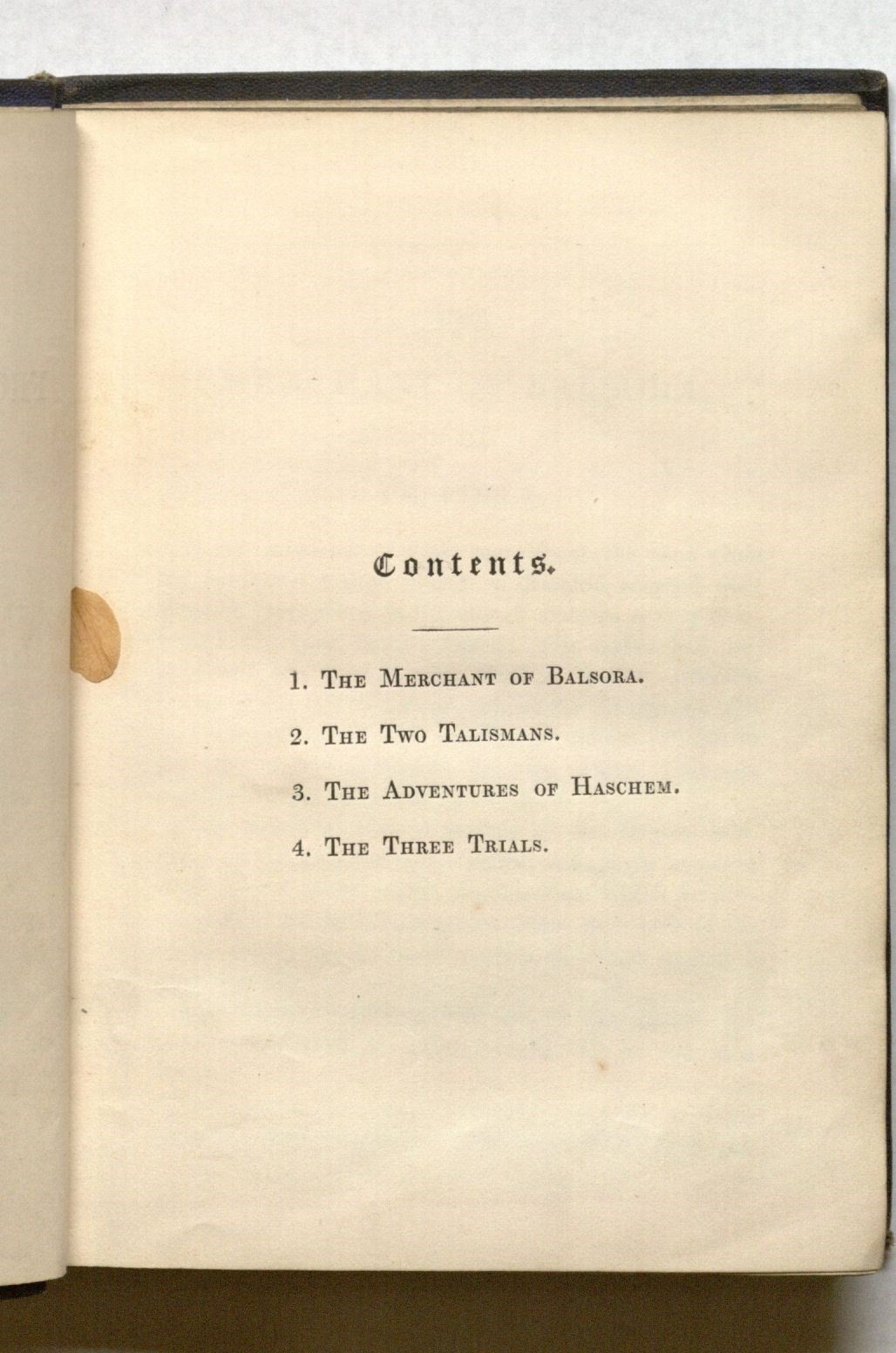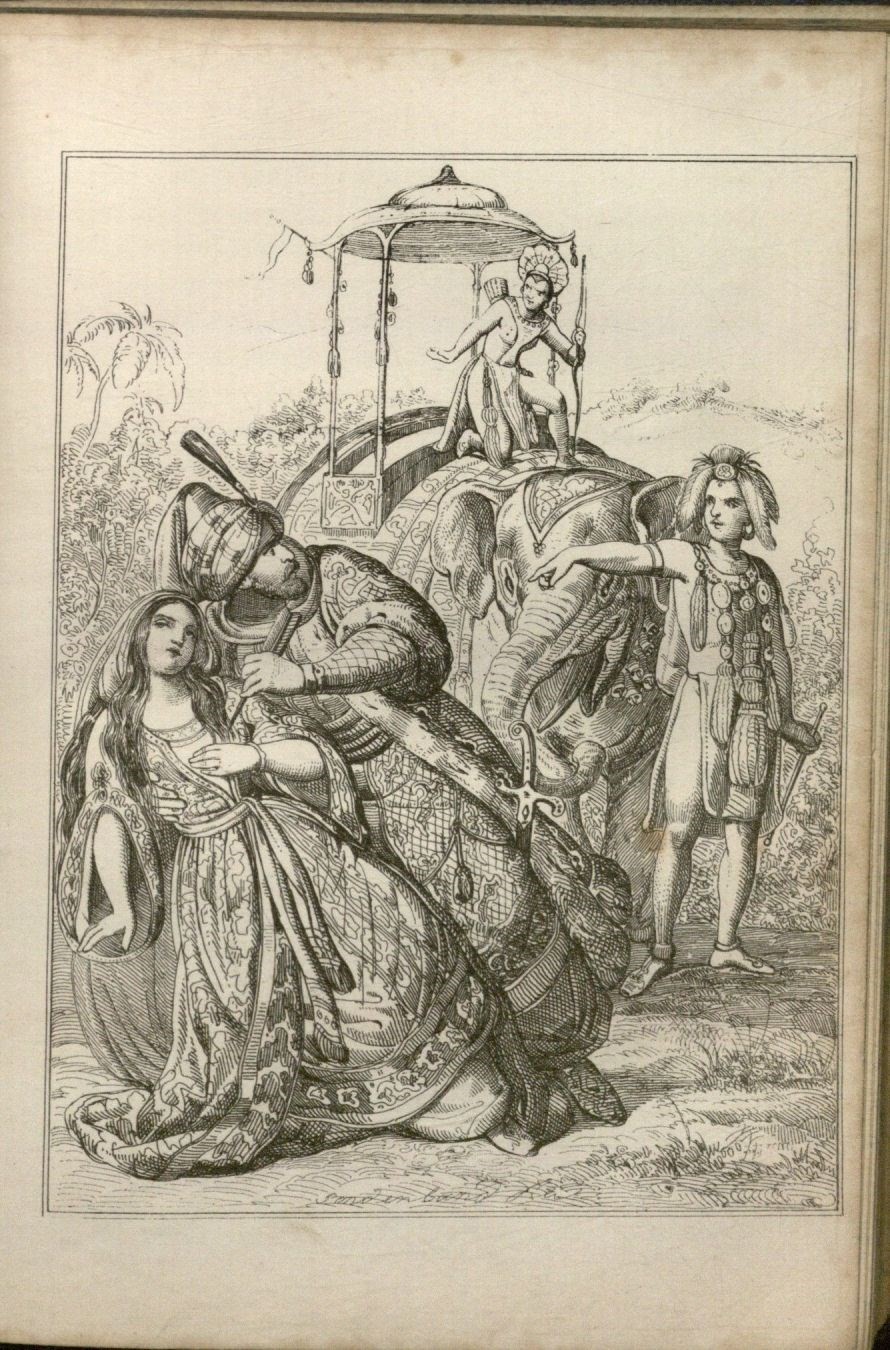Happy 150th Birthday, Beatrix Potter!
July 29th, 2016In celebration of the 150th birthday of the beloved children’s author and illustrator, Beatrix Potter, I am featuring a few examples of her beautiful work found in our Special Collections here at Spencer Research Library. Please enjoy the selections below along with a short biography introducing you to one of the most influential figures in children’s literature from the twentieth century.
Beatrix Potter was born on July 28, 1866 in London, England. Although she was a lonely child, she was able to find joy in drawing and painting things from the natural world, recording the plants and animals of the English countryside in stunning detail. As an adult she continued to illustrate, even drawing in the margins of letters sent to the children of her former governess, Annie Moore. Her first book, The Tale of Peter Rabbit came about from the drawings on one of these very letters from September 4, 1893!
Front cover and pages 34-35 of Beatrix Potter’s The Tale of Peter Rabbit published in Philadelphia
by H. Altemus in 1904. Special Collections. Call Number: Children 5159. Click images to enlarge.
After partnering with the publishers of Frederick Warne & Co., twenty-two ‘little books’ with lovely color illustrations were produced. Some of these stories even featured her own pets, like the hedgehog Mrs. Tiggy-Winkle.
Front cover of Beatrix Potter’s The tale of Mrs. Tiggy-Winkle published
in New York by Frederick Warne & Co. in 1905. Special Collections.
Call Number: Children 2972. Click image to enlarge.
Because of her skill with writing exciting stories, painting detailed and colorful pictures, and using clear language, Potter’s works quickly became children’s classics.
Here is an excellent example of Potter’s ability to capture humor and action in both the text
and accompanying illustration from pages 52 & 53 of Beatrix Potter’s The Roly-Poly Pudding
published in New York by Frederick Warne & Co. in 1908. Special Collections.
Call Number: Children C606. Click image to enlarge.
She eventually married William Heelis, a solicitor, in 1913 and retired to her farm, Hill Top, to become a prize-winning breeder of Herdwick sheep and a champion for local land conservation. After her death on December 22, 1943 she left 15 farms, several cottages, and over 4,000 acres of land to her husband and on his death to the National Trust, a conservation organization for the United Kingdom.
Potter’s fascination with nature is evident in the loving detail of both plants and animals
found in this example from page 56 of Beatrix Potter’s The Tale of Mr. Jeremy Fisher published
in New York by Frederick Warne & Co. in 1906. Call Number: Children 2983. Click image to enlarge.
To learn more about Beatrix Potter and view her delightful books, come visit us at Spencer Research Library and check out a few of these items:
- Peter Rabbit & other tales : Art from the world of Beatrix Potter. New York: New York University, [c1977]. Shelved at Spencer Research Library. Call Number: C18290.
- Potter, Beatrix. Beatrix Potter’s letters. London: Warne, 1989. Shelved at Watson Library. Call Number: PR6031.O72 Z48 1989.
- Potter, Beatrix. Transcribed from her code writing by Leslie Linder. The journal of Beatrix Potter, 1881-1897. London; New York: F. Warne, 1989. Shelved at Watson Library. Call Number: PR6031.O72 Z52 1989.
- Potter, Beatrix. The Tale of Squirrel Nutkin. New York: Frederick Warne, [c1903]. Shelved at Spencer Research Library. Call Number: Children A78.
Mindy Babarskis
Reference Specialist
Public Services

